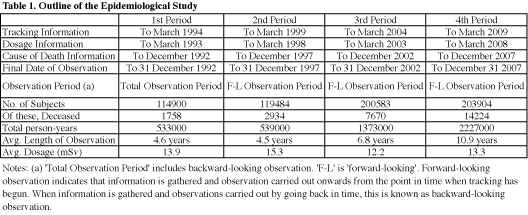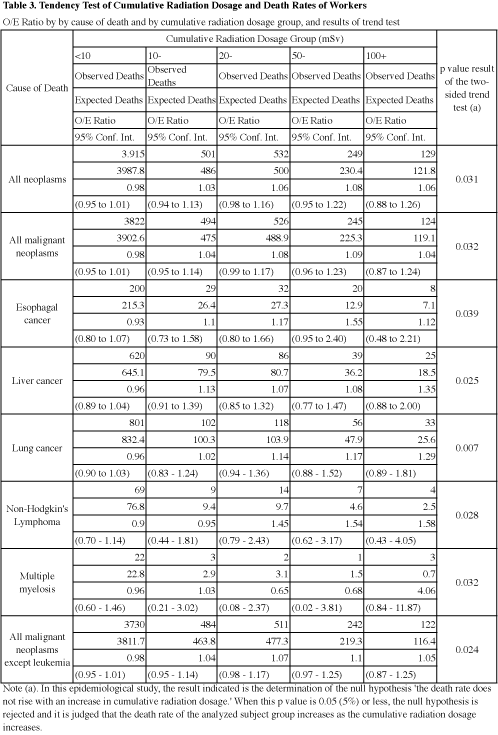Epidemiological Study of Workers at Nuclear Power Generating Facilities (4th Period FY2005 to FY2009) Nuke Info Tokyo No. 141
The study should not simply say “how much irradiation is acceptable”
In September 2010, the Epidemiological Study of Workers at Nuclear Power Generating Facilities, etc. (4th Period, FY2005 to FY2009) was finalized and published. This epidemiological study was commissioned to the Radiation Effects Association by the Ministry of Education, Culture, Sports, Science and Technology (MEXT – formerly the Science and Technology Agency). The main aim of the study was to “gain scientific knowledge on the impacts of low-level radiation on the human body.”
Previous reports (1st Period Study, FY1990 to FY1994; 2nd Period Study, FY1995 to FY1999; 3rd Period Study FY2000 to FY2004) have studied such topics as the comparison with the death rate of the total Japanese male population and the association between radiation dosage and death rate.
In this 4th Period Study, as shown in the tables, a comparison between the death rate of the total Japanese male population (external comparison: the standardized mortality ratio (SMR) from 20 years of age and over to 84 years of age) shows an SMR of 1.04 for all malignant neoplasms excluding leukemia (1.01 to 1.07 in the 95% confidence interval), confirming a significantly high death rate. The SMRs for cancers by site were liver cancer 1.13 (1.06 to 1.21) and lung cancer 1.08 (1.02 to 1.14), confirming a significantly high death rate.
In the trend test (internal comparison: trend test) for death rate and cumulative radiation dosage within workers for all neoplasms excluding leukemia, it was confirmed that there is a significant trend for death rate to increase with increasing radiation dosage. Looking at cancers by site, concerning death rates for cancer of the esophagus, liver cancer and lung cancer, and the death rates for non-Hodgkin’s lymphoma and multiple myeloma, it was confirmed that there is a significant trend for death rate to increase with increasing radiation dosage.
However the report concludes, “It can be said that there is no clear evidence confirming that low-level ionizing radiation has an impact on cancer death rates.” Regarding the statistically significant associations, the report states, “The possibility of impacts due to confounding with such lifestyle habits as smoking cannot be ruled out,” and “The possibility that a significant association with radiation dosage has been indicated by chance cannot be ruled out.”
These results have been shamelessly put forward in materials for the deliberations on a new Framework for Nuclear Energy Policy and in our negotiations with the government for widening the framework for approval for nuclear power facility workers under the Workers’ Accident Compensation Insurance system that we have been campaigning for.
In the English paper by Tamiko Iwasaki (former Director of the Center for Radiation Epidemiological Studies) et al., published in Radiation Research 159 (2003), regarding the 2nd period epidemiological study (1986 to 1997 analysis) it was reported that, “A positive correlation was found with esophageal, stomach and rectum cancers and with multiple myeloma,” despite the fact that releases inside Japan have consistently stated that, “Clear evidence of impacts on cancer death rates have not been confirmed.”
A characteristic feature of the Japanese nuclear industry is the structure of multiple layers of sub-contracting, 96% of the total radiation dosage being borne by subcontracted workers. Those who have possibly been exposed to large radiation dosages, foreign nationals and those without a certificate of residence, have been excluded from this study. The attitude and policy that has been adopted is one that considers exposure up to a level where “clear evidence” of health impacts is seen as acceptable, but an epidemiological study should never be carried out on this premise.
Mikiko Watanabe (CNIC)
 |
 |
 |
